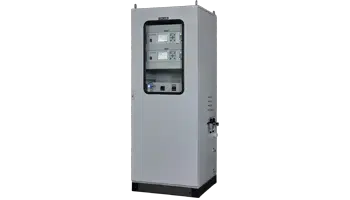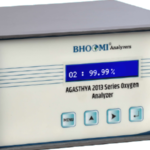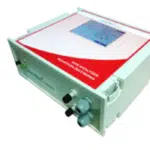NDIR analyzer – Essential aspects
NDIR analyzers are suitable for measuring sample gases in both high and low concentrations. As they are highly durable, even when exposed to oxidizing compounds, they offer long service lives and low life-cycle costs. Having said that, let us find out more about an NDIR analyzer under the following sub-heads.
What are the gases analyzed by the NDIR analyzer?
How does it work?
Why must you use NDIR analyzers?
Catalytic bead sensors versus NDIR Technology
Let us take one sub-head one at a time in the paragraphs below-
What are the gases analyzed by the NDIR analyzer?
There is a wide array of gases that are analyzed by NDIR analyzer. These include gases like carbon dioxide, sulfur dioxide, carbon monoxide, Nitrogen monoxide, Hydrogen Chloride, Chlorine etc.
How does it work?
The Non Dispersive Infrared (NDIR) detection method is based upon the absorption of infrared radiation at specific wavelengths as it passes through a volume of sample. Non-Dispersive Infrared (NDIR) techniques for the measurement of various gases rely on the energy absorption characteristics of a particular gas in the infrared region. In a simple NDIR instrument, Infrared energy passes through two identical tubes and falls on a detector. The first tube is the reference cell and is filled with a non-absorbing gas such as nitrogen. The second tube is the measurement cell and contains the gas sample to be analyzed.
The difference obtained between the amount of infrared light of a specific wavelength that the lamp generates between that emitted by the lamp and one that reaches the detector determines the concentration. As with the concentration of gases, the measurement unit is ppm or parts per million.
Why must you use NDIR analyzers?
NDIR analyzers are perfect for the measurement of sample gases irrespective of the concentration of the gas. It successfully measures the concentration in both low as well as high concentrations. In fact, despite being exposed to oxidizing compounds, they are durable. The cost is affordable and longevity is remarkable. NDIR analyzer has low cross-sensitivity, better accuracy, long life, minimum maintenance, and low drift.
Applications
Calcination, Anode Bake Oven, Pot room, Rotary Kiln, Boiler Stack, ChlorAlkli HCl Plant, Fertilizers Phosphate, Urea Old Plants, Coke oven plant, Sintering Plant, Blast Furnace, Steel making shop-basic oxygen furnace, Blowing/lancing operation, Dedusting of desulphurisation, Rolling mill, Arc furnaces, Cupola Foundry, Calcination plant/lime kiln / dolomite kiln, Refractory unit, Rotary Kiln, Furnace boiler and captive power plant, Sulphur Recovery Unit (SRU), Petrochemical Furnace, Boiler, Heater, Vaporizer Liquid Fuel based, Thermal Power Plant, Zinc Smelter, SRU, Copper Smelter, SRU, Biomedical waste Incinerator, Common Hazardous Waste Incinerator, Sugar, Sugar, Cotton Textile, Composite Woolen Mills, Synthetic Rubber, Pulp & Paper, Distilleries, Leather Industries, Calcium Carbide, Carbon Black, Natural Rubber, Asbestos, Caustic Soda, Small Boilers , Aluminium, Plants, Tanneries, Inorganic Chemicals & other such industries using boilers.



